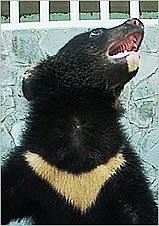foreignpolicy

The United States Air Force will dramatically expand its military presence across the Pacific this year, sending jets to Thailand, India, Singapore, and Australia, according to the service's top general in the region.
For a major chunk of America's military community, the so-called "pivot to Asia" might seem like nothing more than an empty catchphrase, especially with the Middle East once again in flames. But for the Air Force at least, the shift is very real. And the idea behind its pivot is simple: ring China with U.S. and allied forces, just like the West did to the Soviet Union, back in the Cold War.
U.S. military officials constantly say they aren't trying to contain China; they're working with the Chinese and other Pacific nations to "maintain stability" in the region. Still, a ring of bases looks an awful lot like something we've seen before.
In Australia, for example, the Air Force will dispatch "fighters, tankers, and at some point in the future, maybe bombers on a rotational basis," said Gen. Herbert "Hawk" Carlisle, chief of U.S. Air Force operations in the Pacific, during a breakfast with reporters in Washington on July 29. The jets will likely start their Australian presence sometime in the next year at the Royal Australian Air Force (RAAF) base at Darwin (already crowded with Marines), before moving to nearby RAAF Base Tindal, according to the four-star general.
This is just the start of the Air Force's plan to expand its presence in Asia, according to Carlisle. In addition to the Australian deployments, the Air Force will be sending jets to Changi East air base in Singapore, Korat air base in Thailand, a site in India, and possibly bases at Kubi Point and Puerto Princesa in the Philippines and airfields in Indonesia and Malaysia.
All of this helps the United States develop a network of bases in the region and build ties to allies that operate American equipment and know how to work with the U.S. military.
"One of the main tenets of our strategy is to expand engagement and interoperability and integration … with our friends' and partners' militaries," said Carlisle.
"The only defense budgets in the world that are climbing are in Asia," said the general. This means the United States is working to grow its network of American-armed Pacific allies that can, in effect, bolster the U.S. presence there.
"We exercise together; we train together; we build their capability; and we also get familiar with them and the environment," said Carlisle, who promised such collaboration "will pay tremendous dividends."
Carlisle insists that the service isn't planning on building large amounts of infrastructure across Southeast Asia to support permanent U.S. garrisons. Instead, it will have a steady stream of U.S. and northern Pacific-based units rotating into existing airfields in the region.
"We're not gonna build any more bases in the Pacific" to support the U.S. Air Force's increased presence there, said Carlisle.
The Air Force is taking a page from its Cold War playbook designed to keep the Soviets from invading Europe and will constantly deploy units based in the United States and the northern Pacific to a string of airfields in Southeast Asia.
"Back in the late great days of the Cold War, we had a thing called Checkered Flag: We rotated almost every CONUS [Continental United States] unit to Europe," said Carlisle, "Every two years, every unit would go and work out of a collateral operating base in Europe. We're turning to that in the Pacific."
Right now, the U.S. Air Force has nine main major bases scattered throughout the Pacific, from Alaska and Hawaii to Guam, Japan, and Korea. While these sites will see some rotational aircraft pass through, they're already pretty crowded with aircraft that are permanently based in those locations. This means the air service will start regularly sending aircraft to countries it hasn't had a presence in since the Cold War.
"In a lot of ways we'll move increasingly south and east with our rotational presence," said Carlisle. "The most capable platforms will be rotated into the Pacific."
This means the Air Force will sent large numbers of F-22 Raptors, F-35 Joint Strike Fighters, and B-2 stealth bombers to the region, according to Carlisle (who pointed out that the first permanent overseas base for the F-35 will be in the Pacific).
Remember, the Navy and Marines have already started their pivot to Asia, with the Navy basing littoral combat ships in Singapore and the Marines sending troops on their aforementioned deployments to Australia. Meanwhile, the Marine Corps is also refurbishing old World War II airfields on Pacific Islands. These bare-bones strips, like the one on Tinian, would be used by American forces in case their main bases are targeted by Chinese ballistic missiles.
U.S. officials keep saying that these deployments to the Pacific will be just for a short while. But these rotating troops will still need support staff waiting for them at all of these sites -- which means America's expansion in the Pacific be anything but temporary.



